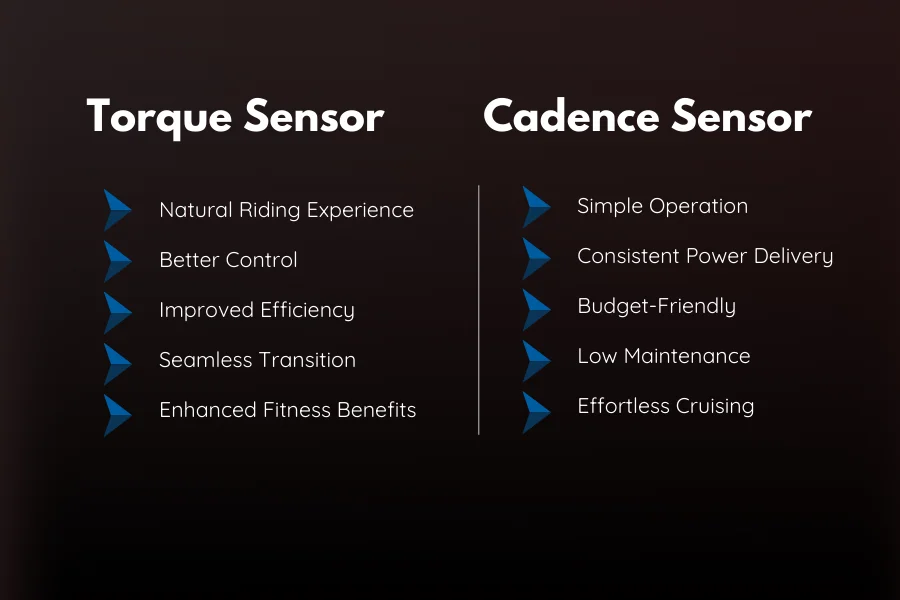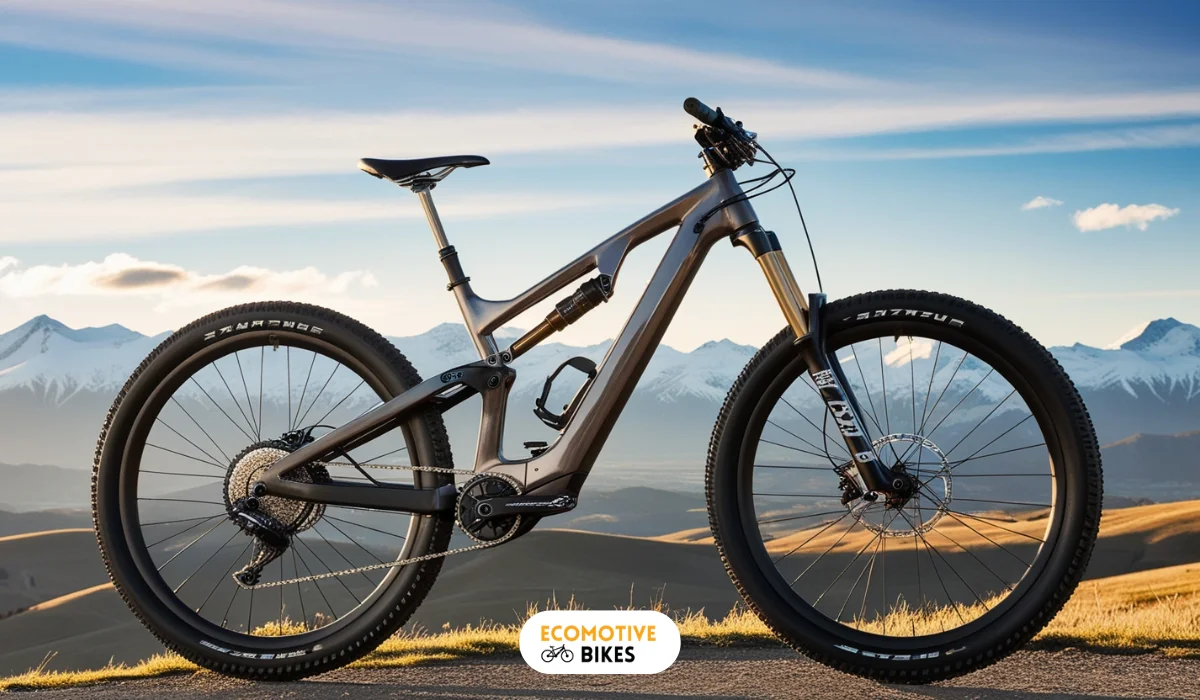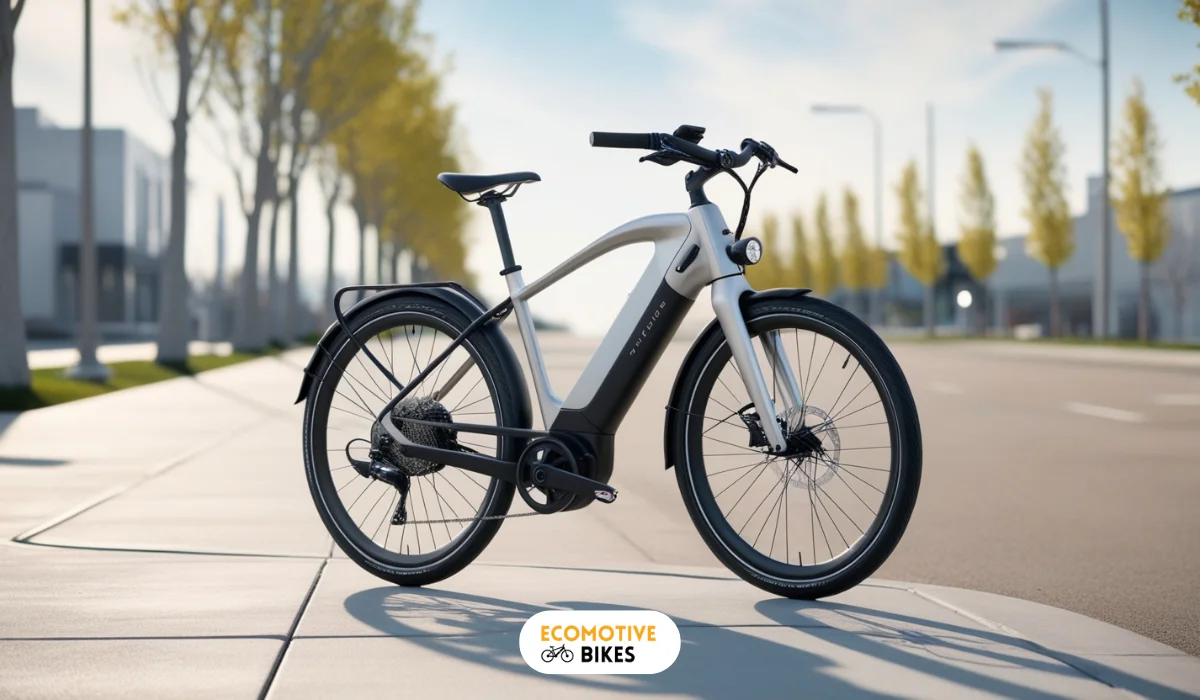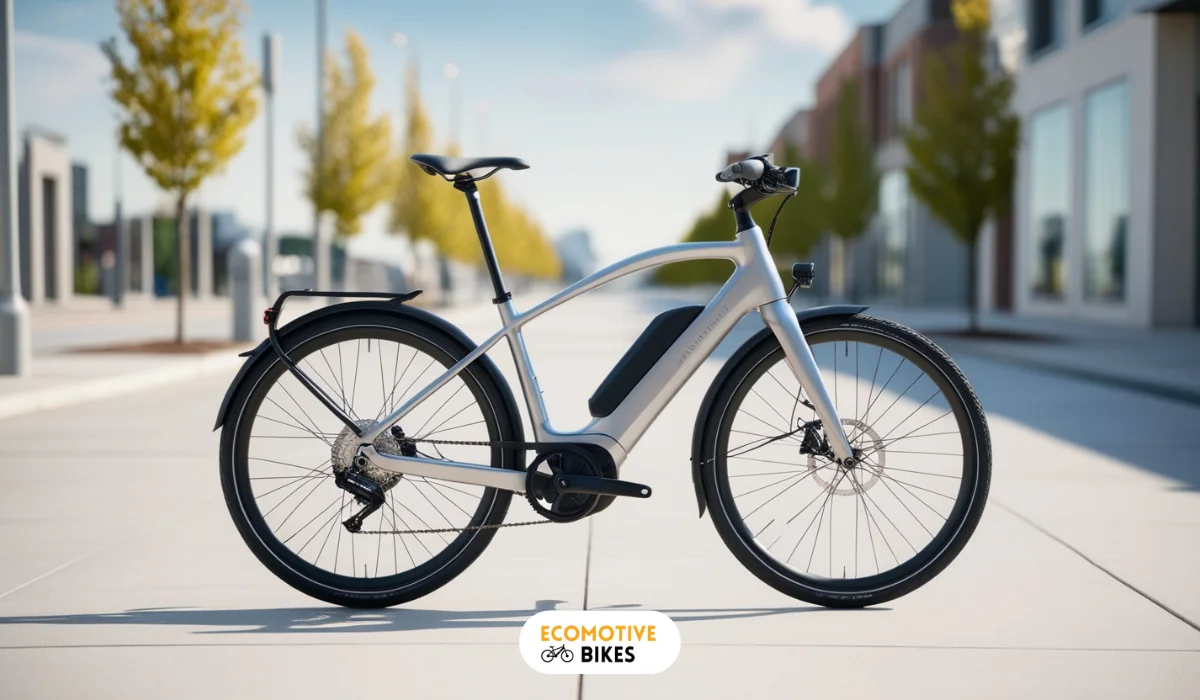Torque Sensor vs. Cadence (Speed) Sensor On E-bikes
Torque Sensor vs. Cadence (Speed) Sensor: Understand how these two e-bike technologies impact your ride experience, ensuring you choose the best fit for your needs.
Table of Contents
Related Articles:
Beyond the cool frame and speedy motor, there’s a hidden battle raging inside: torque sensor vs. cadence sensor on e-bikes. These little guys decide how much help you get from the motor, affecting your ride feel, battery life, and how much sweat you break. So what should you opt for? Or does it even matter?
As e-bike experts, it’s our job to untangle the tech and pick the perfect sensor for your e-biking adventures!

What are e-bike sensors?
Both cadence (speed) and torque sensors are the workhorses behind an e-bike’s Pedal Assist System (PAS). While they both ultimately trigger the motor, their methods for determining how much assistance you get differ significantly. This distinction has a pivotal impact on the overall performance and feel of your e-bike ride. Let’s get into how each sensor operates.
The speed sensor, typically found in the bottom region of the bike, focuses on measuring rotational speed, while the torque sensor evaluates the force exerted during pedaling. Both sensors have unique advantages and differences that cater to rider preferences and needs.
In this comprehensive guide, we will probe into the intricacies of speed sensors and torque sensors, helping you navigate the decision-making process with clarity and confidence in choosing the correct sensor for your e-bike.
Role of sensors in e-bike performance
For optimal performance, e-bikes rely on sensors to determine the level of assistance needed based on the rider’s pedaling input. Torque sensors and cadence sensors play a crucial role in modulating the motor’s power output, providing a seamless and enjoyable riding experience. These sensors ensure that the motor assistance aligns with the rider’s effort, resulting in a smooth and efficient ride.
We already know what is a sensor on an e-bike and its role. It is time to learn what speed sensor is and what torque sensor is.
Before we go deeper into the subject, here’s a breakdown of the key differences between cadence and torque sensors in e-bikes:
| Cadence (Speed) | Torque | |
| Activation | Pedal assist may continue briefly even after the rider stops pedaling. | Requires the rider to apply force to the pedals for activation, eliminating the need for initial “cranking.” |
| PAS Cutoff | Pedal-assist may continue briefly even after the rider stops pedaling. | Assist ceases immediately upon cessation of pedaling, offering a more intuitive response. |
| Riding Feel | Delivers a less natural feel, with power output based on a pre-set level rather than real-time effort. | Provides a more natural riding experience, dynamically adjusting motor assistance based on the force exerted by the rider. |
| Effort | Requires less continuous effort. Riders can set a desired power level and maintain a steady cadence for consistent assistance. | Demands more consistent effort to maintain the desired level of assistance, as it adjusts proportionally to pedal pressure. |
| Cost | more affordable due to the simpler technology involved. | Expensive due to advanced technology and precise measurement capabilities. |
| Battery Life | May result in increased battery consumption due to potentially less efficient motor usage. | Potentially conserve battery by matching power to effort. |
| Control | Easier to pre-set the desired assistance level for a consistent riding experience. | Offers more dynamic and precise control based on real-time effort. |
| Suitability | Ideal for flat terrain, casual riders, or those who prefer a set-and-go approach. | Ideal for hilly terrain, active riders seeking a natural feel, and those seeking efficiency. |
What is a torque sensor in an electric bike?
Cadence sensors may offer a simple approach to e-bike assistance, but torque sensors elevate the experience to a whole new level. It takes an approach to e-bike assist up a notch. They ditch relying just on speed and instead use pressure gauges to measure your pedaling force. These gauges act like tiny detectives, meticulously measuring the force you exert on the pedals. This force becomes the guiding principle for the motor’s response. This translates directly to motor power.
The magic of torque sensors lies in their ability to tailor motor assistance directly to your effort. Push down harder, and the motor seamlessly ramps up its power output, propelling you forward with increased vigor. Conversely, ease off the pressure, and you’ll feel a corresponding decrease in assistance. This creates a beautifully intuitive riding experience that mirrors a traditional bike.
It’s like a regular bike – the more effort you put in, the more responsive the ride. This natural feel makes torque sensors a favorite for riders seeking a seamless e-bike experience that mirrors traditional cycling.
Mechanism of torque sensors in e-bikes
Many e-bikes are equipped with torque sensors. These are pretty smart features. They measure the amount of effort a rider puts into pedaling and adjust the motor’s assistance accordingly. This means the harder you pedal, the bike helps you more. It’s like having a bike that understands you.
A torque sensor has lots of benefits. It gives you a more natural bike-riding feel but with an extra lift. It’s a compelling choice for discerning e-bike riders, particularly those seeking a workout or tackling challenging terrain.
Advantages of Torque Sensors
- Natural Riding Experience: Torque sensors provide a more intuitive ride, mimicking the feel of a traditional bike. The motor seamlessly adjusts its assistance based on your pedaling effort, creating a natural and familiar experience.
- Better Control: Take command of your ride. Torque sensors offer precise control over acceleration and speed, allowing you to adapt to different terrains and riding styles.
- Improved Efficiency: Get the most out of your battery! Torque sensors ensure power output matches your effort, maximizing battery life for longer rides.
- Seamless Transition: Say goodbye to jerky starts and stops! Torque sensors provide a smooth transition in motor assistance for a comfortable and enjoyable ride.
- Enhanced Fitness Benefits: Looking for a workout with a boost? Torque sensors allow you to set the intensity by adjusting your pedaling effort. You get the assistance you want while still getting a good exercise session.
Disadvantages of Torque Sensors
While torque sensors offer a superior riding experience, there are some considerations:
- Higher Cost: Due to the advanced technology, e-bikes with torque sensors typically carry a higher price tag.
- Requires More Effort: For a leisurely ride with minimal pedaling, torque sensors might not be ideal as you’ll need to put in more effort to activate higher motor assistance.
- Not Ideal for Casual Riders: If effortless cruising is your priority, a torque sensor e-bike might not be the most suitable choice.
- Complexity in Maintenance: The sophisticated nature of torque sensors might translate to more complex and potentially expensive maintenance requirements.
- Limited Availability: Budget-friendly e-bike models often lack torque sensors.
What is the speed sensor (cadence sensor) in an electric bike?
A speed sensor, also known as a cadence sensor measures how fast you pedal (cadence), not the overall speed of the e-bike. This makes it a popular choice for beginner riders because it offers a simpler and more predictable riding experience.
Think of a cadence sensor like cruise control for your legs. You set the desired power level on the display, and the sensor detects your pedaling. Once you reach a specific pedaling speed, the motor kicks in and maintain that level of assistance regardless of how hard you push.
Functionality of cadence sensors in e-bikes
Cadence sensor is an e-bike’s built-in cheerleader. It doesn’t care how hard you push the pedals, just how fast they’re spinning. Cadence sensors monitor the speed at which you pedal and activate the motor assistance accordingly. Unlike torque sensors, cadence sensors focus on the frequency of your pedaling. This means that the motor assistance remains consistent regardless of how hard you pedal, providing a smooth and predictable riding experience.
This type of sensor is great if you want to have a consistent riding experience without pedaling super hard, but they might not feel natural and can sometimes give a jerky feel, especially if you start and stop a lot.
Advantages of speed (cadence) sensors
- Simple Operation: Cadence sensors are perfect for beginners or those seeking ease of use. They kick in as soon as you start pedaling, making the e-bike intuitive and straightforward.
- Consistent Power Delivery: Enjoy a steady and predictable ride with cadence sensors. They offer uniform power output, ensuring a smooth and reliable assist.
- Budget-Friendly: An attractive option for cost-conscious riders! E-bikes with cadence sensors are generally less expensive than their torque sensor counterparts.
- Low Maintenance: The simpler technology of cadence sensors translates to fewer potential maintenance issues and easier repairs, keeping your e-bike running smoothly.
- Effortless Cruising: Cadence sensors are ideal for casual riders who prefer a leisurely experience. They provide effortless cruising without the demand for intense pedaling.
Disadvantages of cadence sensors
While cadence sensors offer a user-friendly experience, there are some limitations to consider:
- Battery Drain: Expect faster battery consumption due to continuous motor assist. This translates to shorter rides and more frequent charging.
- Less Natural Ride: The constant motor assist might feel less intuitive compared to torque sensors, lacking the natural connection between pedaling effort and power output.
- Limited Speed Control: You might rely more on manual controls for adjusting speed, potentially hindering a smooth and immersive ride.
- Delayed Response: A noticeable lag between starting to pedal and motor engagement can impact maneuverability in stop-and-go situations.
- Fitness Limitations: For riders seeking a workout, the constant motor assist with cadence sensors may not provide the desired level of physical exertion
Differences between torque and cadence sensors
For e-bike enthusiasts, understanding the distinctions between torque and cadence sensors is important. Here is a complete breakdown of the difference.
- Natural Ride Feel: Torque sensors excel in replicating the familiar experience of a traditional bicycle. They adjust motor assistance in proportion to your pedaling force, creating a more intuitive and natural connection between rider and machine.
- Consistent Power Delivery: For riders prioritizing a predictable and steady ride, cadence sensors deliver consistent power output. Regardless of the effort you exert, the motor provides a uniform level of assistance, ideal for maintaining a consistent pace on flat terrain.
- Cost-Effectiveness: Cadence sensors are generally more budget-friendly due to their simpler technology. This makes them a practical choice for riders seeking a cost-efficient entry point into the world of e-bikes.
- Battery Efficiency: Torque sensors demonstrate superior efficiency in battery utilization. By tailoring power output to your pedaling effort, they minimize wasted energy and extend your e-bike’s range on a single charge.
- Range Optimization: Torque sensors excel at maximizing range. Their ability to adjust power output based on your pedaling intensity conserves battery life, allowing you to explore further distances without needing frequent recharging.

How do sensors impact battery life & efficiency?
Despite the convenience and benefits of both torque sensors and cadence sensors on e-bikes, the choice of sensor can significantly impact the battery life and efficiency of the bike. Torque sensors, known for their ability to adjust power based on the rider’s input, are generally more battery-friendly than cadence sensors. This is because torque sensors utilize power more efficiently by adapting to the rider’s pedaling effort, thus conserving battery power for longer rides
Factors to consider when selecting a sensor
Keep in mind that when choosing between a torque sensor and a cadence sensor for your e-bike, you should consider factors such as your riding style, the terrain you will be navigating, and the level of assistance you prefer. Additionally, think about whether you prioritize a more natural biking feel or consistent power delivery.
- Consider the riding you will do – whether it’s more casual cruising or intense uphill climbs.
- Think about the level of control you want over your bike’s acceleration and speed.
- Assume that a torque sensor might be better suited for riders seeking a more intuitive and energy-efficient riding experience.
- While cadence sensors offer a cost-effective entry point, torque sensors provide a more natural ride experience. The choice hinges on prioritizing affordability or a nuanced riding experience.
- Test rides reveal how sensor types impact battery life in real-world situations, aiding your decision.
Future developments and innovations
The future of sensor technology in e-bikes looks promising, with ongoing developments focused on enhancing rider experience and battery efficiency.
The incorporation of more advanced torque sensors is expected to improve battery usage and provide riders with greater control over their e-bike. For instance, new torque sensor models may offer seamless transitions in motor assistance, reducing any jerkiness during rides and providing a smoother overall experience.
/faq
Final Words: Speed (Cadence) sensor vs. Torque sensor
The battle between torque and cadence sensors rages on! Each offers distinct perks:
- Torque Sensors: Deliver a natural, workout-friendly ride that adjusts to your pedaling effort. Ideal for those seeking a traditional bike feel. (Downside: pricier)
- Cadence Sensors: Provide consistent power for effortless cruising, making them budget-friendly and user-friendly. (Downside: less natural ride feel)
The perfect sensor hinges on your priorities. Do you crave a seamless, intuitive ride? Go for torque. Prioritize affordability and effortless assistance? Choose cadence. Ultimately, understanding these sensors and how they impact battery life, efficiency, and control empowers you to make an informed decision and maximize your e-bike experience.





